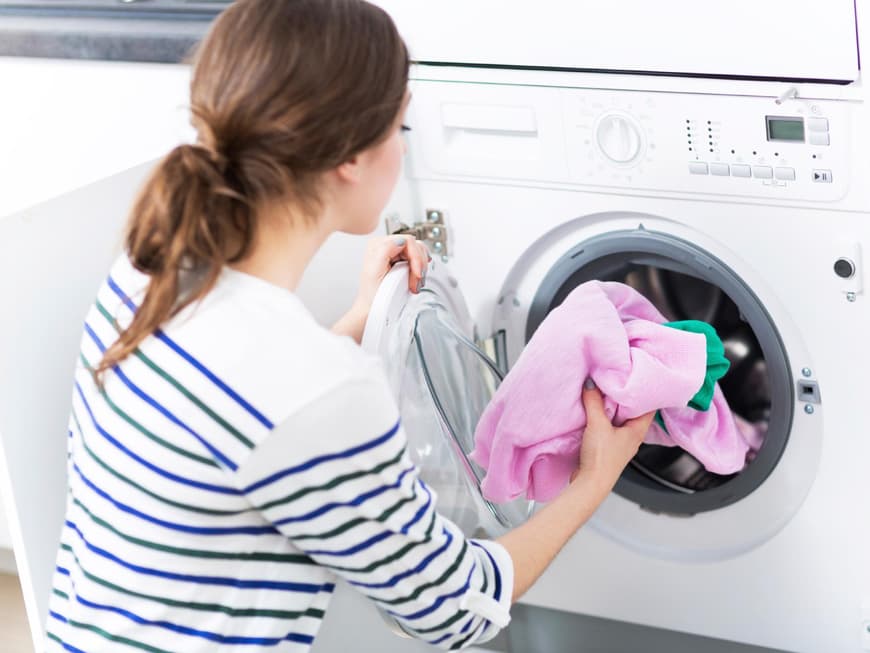
Washing laundry properly
Which detergents do I really need?
Dr. Glassl: Heavy-duty detergent containing bleach for heavily soiled clothes and whites, color detergent for colors and mild detergent for delicate items. That's a good basic set.
Does the machine really eat socks?
Yes, small socks can slip between the housing and the drum. It is best to put them in a laundry protector. Also store bras in it so that the fasteners cannot get caught in other clothes.
Is fabric softener useful for washing laundry properly?
Yes, it smoothes the laundry and makes ironing easier. In addition, textiles don't build up so quickly and stay beautiful for longer. Softer laundry also does not rub so much on sensitive skin.
The right temperature for washing laundry
Is it really enough to only wash at 30 degrees?
Yes, but I recommend only washing lightly soiled outerwear at such low temperatures. Put underwear, bed linen or towels in the machine at a minimum of 40 degrees with a detergent containing bleach. And to prevent germs from building up in the drum: twice a month at 60 degrees.
Do you need a hygiene rinse aid to wash laundry properly?
Yes, I recommend it for underwear and hosiery that should not be washed with detergent (e.g. silk).
Washing laundry: Tips for a fresh fragrance
How do I keep my laundry smelling particularly fresh?
Always hang the clothes up straight away or put them in the dryer. Fabric softener and a scented sachet in the wardrobe provide additional freshness.
What role does water hardness play?
A big one, because the softer the water where you live, the less detergent you need to wash your laundry properly.
Which textiles should I wash inside out?
Depending on what the care label says. Generally jeans, pullovers, T-shirts, jacket and trouser pockets as well as comforter covers to clean them completely. Generally dark and printed cotton items.
Are color protection cloths useful?
Even if most color detergents prevent staining: Additional cloths are certainly useful for clothes that lose a lot of color. However, if the fabric bleeds too much, it is better to wash it individually or by hand.
What is the advantage of concentrates?
I can dose the detergent lower. Because the packaging is not so large, I also protect the environment.
Washing laundry properly - more tips:
When is soaking useful?
For very heavily soiled clothes made of cellulose fibers, for example thick terry towelling. Protein, grease, blood and starch stains are better removed this way. Soaking has no effect on synthetics. Never soak wool and silk, as the protein fibers can be damaged by swelling.
What helps against streaks?
Sometimes a change of washing powder is enough, as some do not dissolve well at low temperatures. However, limescale deposits are also often to blame. They occur when the water hardness is high and the detergent dosage is too low. The streaks can be removed with a damp brush.
Is a pre-wash worthwhile?
Sometimes, for example with laundry that has a lot of pigment dirt such as soil, dust or sand stuck to it. Or with cleaning cloths and wiping cloths that contain residues of care products.
Do I really need a hygiene rinse aid?
Only in exceptional cases, such as fungal infections, if the laundry cannot be washed at 60 degrees with a detergent containing bleach. Or for very sweaty and smelly clothes that can only be washed at 30 degrees.
What reduces lint formation?
Turn clothes inside out, load the machine correctly and add a pair of old tights to the wash: they absorb the lint.
